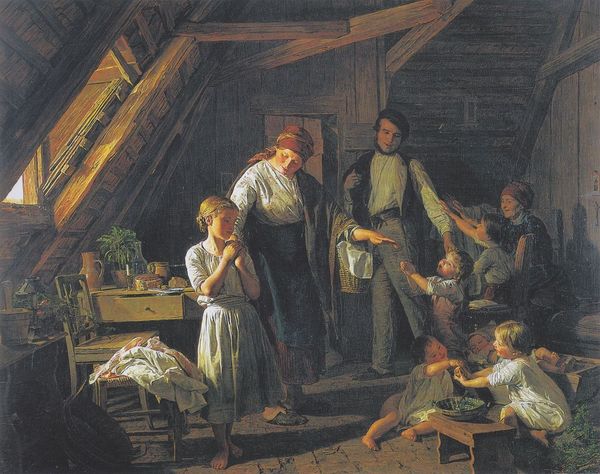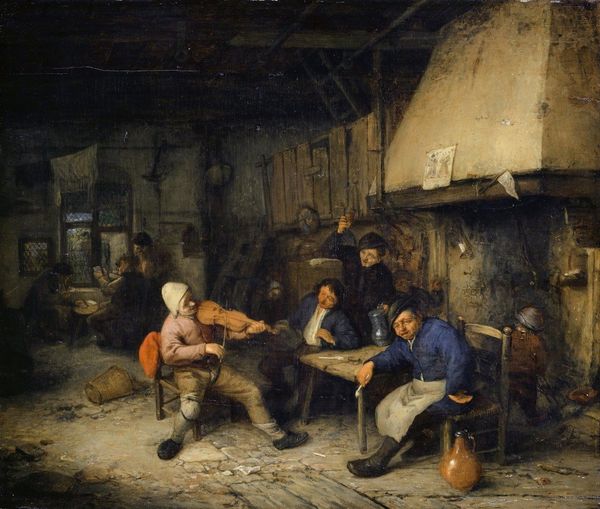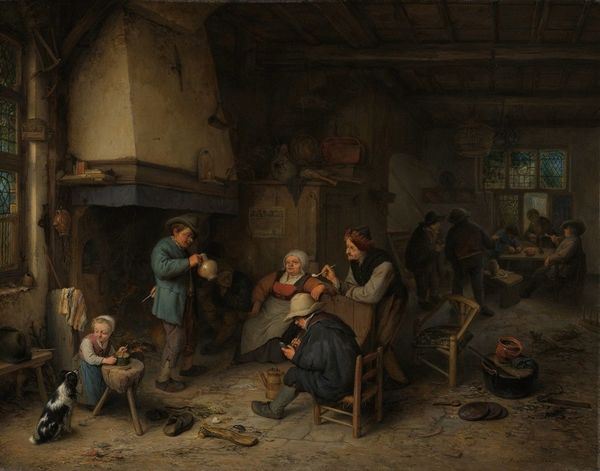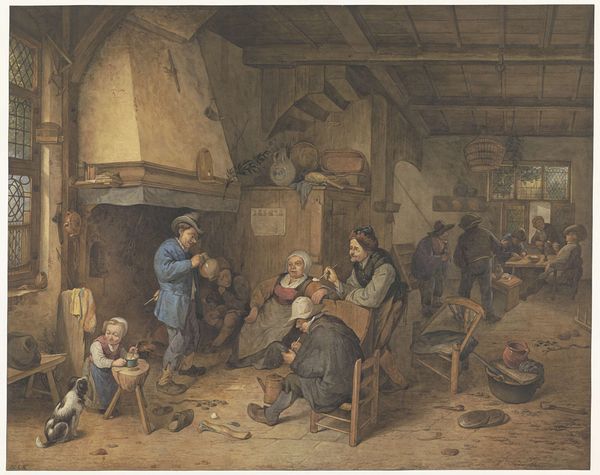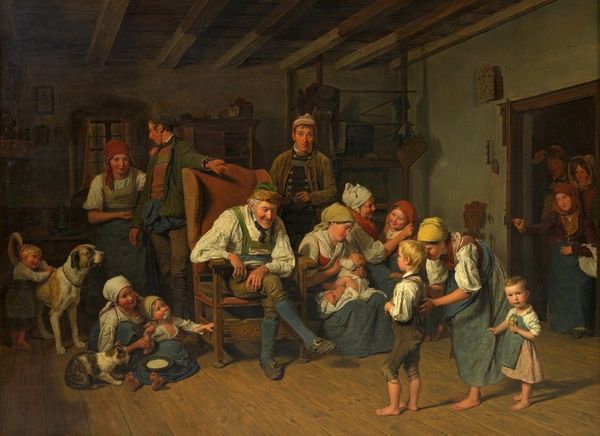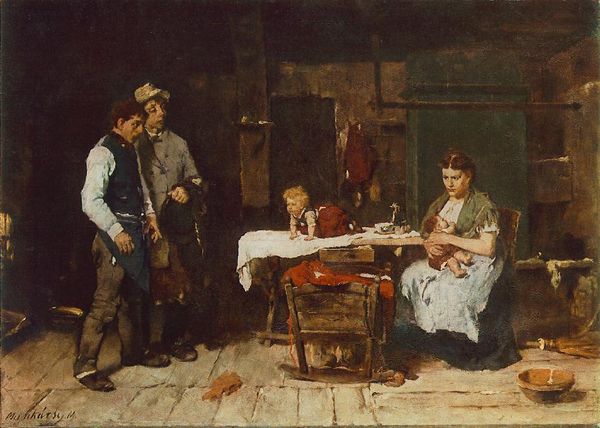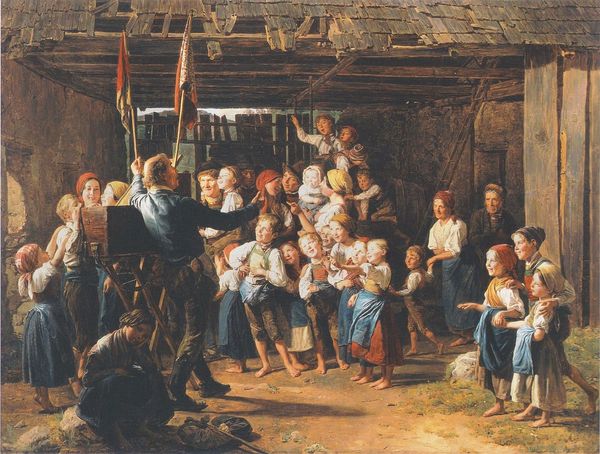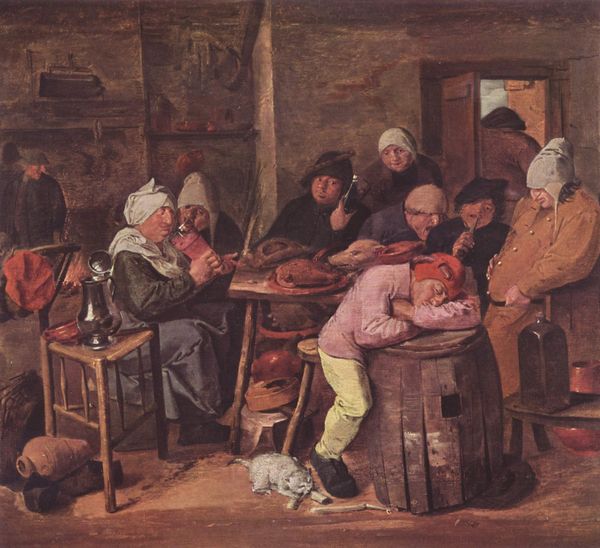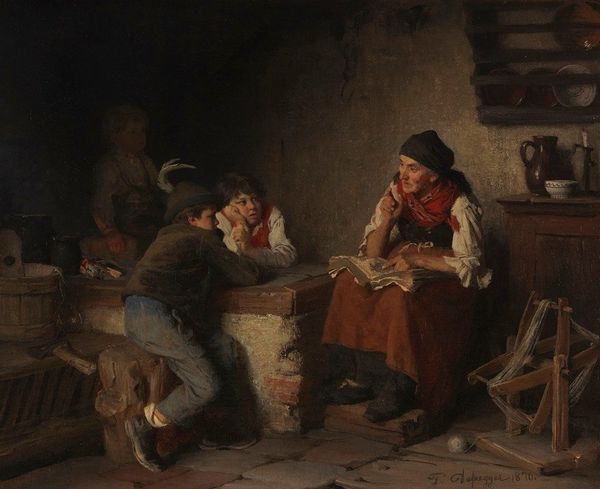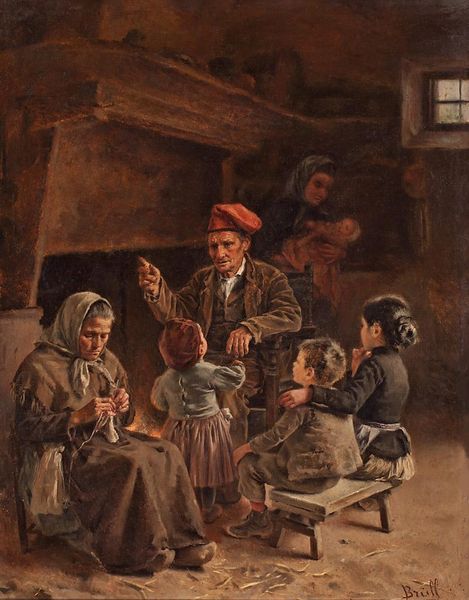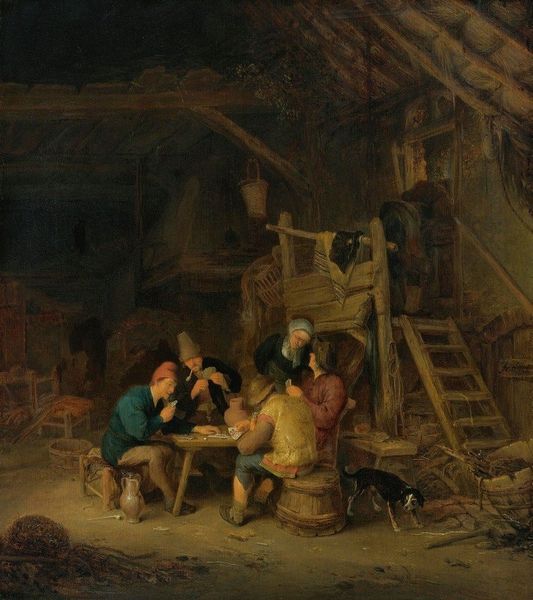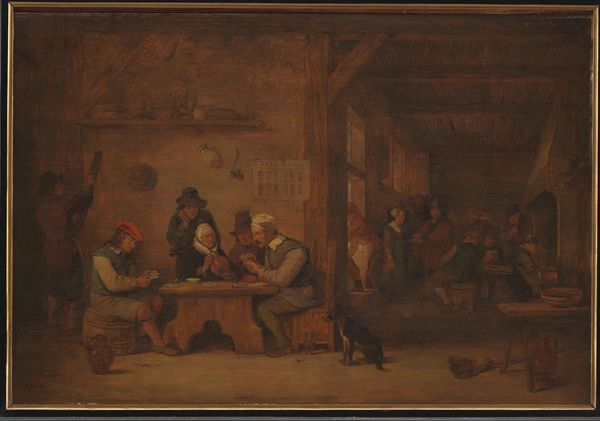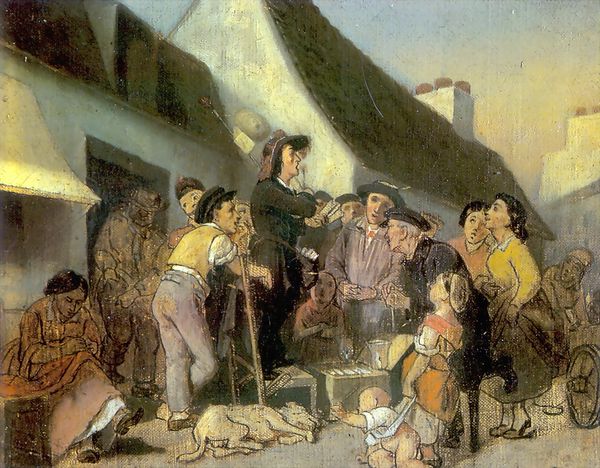
oil-paint
#
gouache
#
oil-paint
#
oil painting
#
genre-painting
#
history-painting
#
mixed media
#
watercolor
#
realism
Copyright: Public domain
Curator: Well, well, well, what have we here? Looks like a moment of respite. My immediate reaction is a heavy sigh of… exhaustion, maybe? There's a stillness, a quiet suffering emanating from those figures sprawled on the hay. What do you make of it? Editor: That's Albrecht Anker's "The Bourbakis", created in 1871 using oil paint and gouache, amongst other media. A glimpse into a tough chapter, indeed, wouldn't you agree? It refers to the internment of the French Bourbaki army in Switzerland during the Franco-Prussian War. The setting clearly evokes sanctuary and refuge. Look at the hay, the low ceilings, and even the animals peeking through the wooden structure... Curator: Yes, that straw seems like a symbol for more than just bedding. It whispers of animal vulnerability, the raw instinct to huddle and survive. Is that why we are also looking into it: as empathetic viewers of these "foreign invaders"? I feel like they are humanized by Anker. Editor: Precisely. Observe those red pants. Loud, stark…almost violently red amidst the earth tones of the setting. A symbol of France itself, wounded, defeated. And see how they are placed closest to the viewer: there's almost no hiding from this loss of face, these "rotten bloodlines," in a figurative sense of a battle completely defeated, a nation beaten. Curator: It feels almost cinematic. But there's a contrasting note: that table. Its a pure bright white, placed on the left as a symbol. An altar, or just an offer of pure succor in this moment? The neutral ground for shared grief. I want to know more about that scene of sharing tea. It is so carefully composed to be one of offering but also... Editor: It’s complex, right? Tea itself represents ritualized care. Think about how tea ceremonies across cultures symbolize communion, comfort, hospitality... However, tea is mostly prepared for or given to sick people. This makes me think about who exactly this succor is for: for them in their broken state? Or, rather, as a catharsis, a social release valve to ease anxieties in those giving aid? Curator: A point well taken. There is no glory on this side of the barn. Just the echoes of what's been lost and those who must now pick up the pieces. Very quietly powerful work if you ask me, almost timeless in how its depiction of displaced peoples transcends the specific war it represents. Editor: Indeed. It speaks volumes through subtlety. We can all be rendered into vulnerable animals regardless of nationality, a sobering and very sad meditation if there ever was one.
Comments
No comments
Be the first to comment and join the conversation on the ultimate creative platform.
